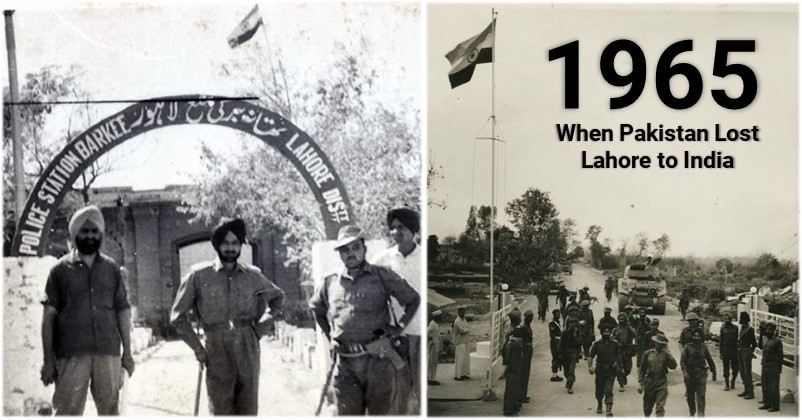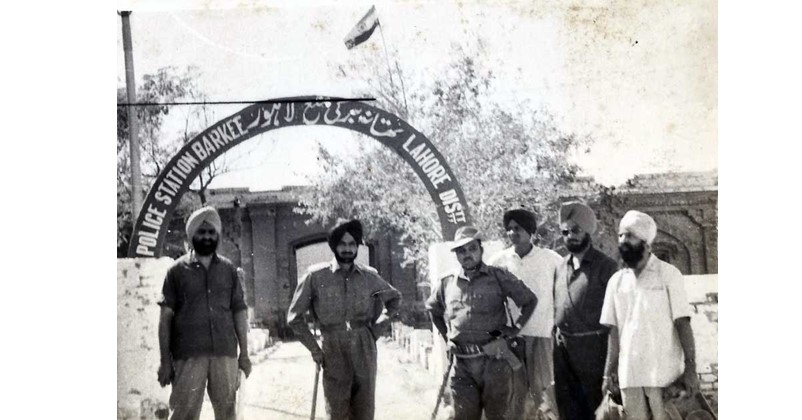1965 War: When Pakistan Lost Lahore to India
| 04-Sep-2020 |

Pakistan has a history of being shamed for its misadventures on international stages like the UN and 1965 was not new. The year saw India and Pakistan fight a full fledged war, second time post independence and partition of British-India in 1947. Recalling history, let us understand how the battle ended when the UN had to call for a ceasefire between the neighbours.
Pakistan as usual denied its hand and termed it as an ‘uprising’. Clear evidence of Pakistan involvement was available and was reported as such by the UN Military observer and by the Secretary General U. Thant at the Security Council on 3 September 1965.
Interrogation of Pakistani prisoners of war (POWs) uncovered the plans for Operation Gibraltar that were made in May 1965— a month before the Rann of Kutch Agreement. IOt was revealed that President of Pakistan, General Ayub Khan had himself addressed the Force Commanders in the second week of July 1965.
Pakistan's plan was to engineer a guerrilla revolt which would destabilize the government of the erstwhile state of Jammu and Kashmir and the attack with its army. They felt that Indian Army would collapse after being sandwiched between Pakistani attacks on their defences on one side and guerrilla forces with a civilian revolt on the other.
But, it did not go the right way. Guerrilla groups were either destroyed, dissipated or dispersed nor did a revolt take place. The infiltrators were discovered to be from Pakistan and not local Kashmiris. Instad, India decided to eliminate the guerilla bases from where they operated and Haji Pir in Saheba were captured in daring operations.
The real face of Pakistan was uncovered, it responded by an offensive across the International Border (IB) with a divisional-sized force supported by an armoured brigade and heavy artillery. Chhamb and Jaurian were captured and their offensive was stopped 6 km short of Akhnur.
Pakistan once again, denied using its army and termed it as an offensive (Operation Grand Slam) by POK (Pakistan Occupied Kashmir) forces. Meanwhile Pakistan’s air force attacked our installations in Amritsar.
India’s patience was now pushed beyond the restraint that was always maintained when dealing with Pakistan. But, by now, had decided to launch operations across the IB. Indian Army’s 11 Corps was given the task of securing the line of the Ichhogil Canal, establishing bridgeheads across the canal and posing a threat to Lahore.
It was decided that Asal Uttar would be the place where we could cover an enemy offensive rather than Khem Karan which could be bypassed. As Asal Uttar covered both, the Khem Karan-Amritsar axis, as well as the Khem Karan-Patti axis. The Pakistani Armoured Brigade attacked exactly as anticipated on 10 September 1965 and attempted to break through the position.
But, despite repeated attempts to break through the Indian defences Pakistanis were unable to make any headway and suffered tremendous losses. A total of 97 tanks were lost by Pakistan, out of which 32 in good running condition were captured.

Having lost the ability to continue the offensive, Pakistan’s Commander-in-Chief called off the offensive and pulled out the remnants of Pakistan’s 1 Armoured Division to meet the threat of India’s 1 Corps offensive in the north. In the meanwhile India’s 1 Corps, a newly raised formation, was given the task of isolating Sialkot from Lahore. The capture of Chawinda was part of this operation.